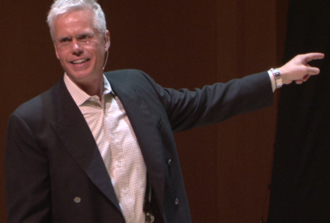How to Manage an Employee with ‘Center-of-the-Universe-itis’
When a child is not able to get attention, he or she will frequently do what kids do and act out in some manner. The goal in these situations is to get attention, whether positive or negative (negative attention is still attention). Attention seeking is a normal behavior in all children and to be fully expected while they try to figure out how to do 'life'.
But what we don't expect—and what can become a big problem in the workplace—is when adults act out in a similar manner.
Every employee needs some level of social interaction, feedback, and validation of the contributions he or she makes to the organization. The emotionally mature person doesn't need to go fishing for these—this need is covered naturally through daily interactions and conventional feedback mechanisms within the workplace.
However, for those with 'Center-of-the-Universe-itis' this isn't enough. To make up for this deficit, they'll spend a large proportion of their time at work (and, presumably, in other areas of their life) creating situations in which they become the center of attention. They may over-dramatize situations; they may adopt a presumptuous attitude and arrogantly project that they always know the right answer; they may express a strong sense of entitlement; they may play the 'victim' card; or, in the extreme, they may exhibit temper tantrums and/or resort to deceit, lying and manipulation to ensure they receive the attention they believe they deserve.
I've found, in the majority of cases, these individuals believe they're owed something simply because of who they are. They may have been raised in an environment where overindulgent parenting keeps them from learning how to accept responsibility for their behavior; they may have attended schools where programs aimed at improving self-esteem have gone overboard and now they believe that they're "special" and shouldn't have to work as hard or shouldn't have to go through the same process as everyone else because they're the exception to the rule; they may have been influenced by social media and the world of "selfies" and "it's all about ME."
Regardless, they now feel compelled to 'act out' when you—as their manager—(and others) don't immediately recognize all their gifts and talents (in addition to the fact that you should feel fortunate to have him or her on the team!).
Left unaddressed, these antics will undermine the camaraderie of the team and make the workplace dynamic unnecessarily drama-filled, tense and frustrating. The HVA this week focuses on a proven method you might want to consider if you have a team member with 'Center-of-the-Universe-itis'.
 … Culture of Results & Engagement®
… Culture of Results & Engagement®







